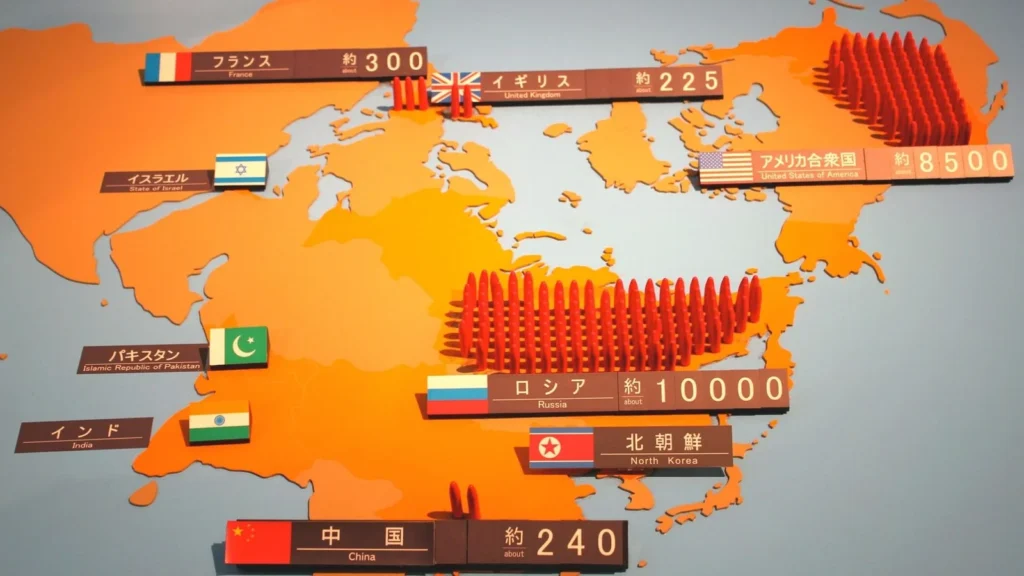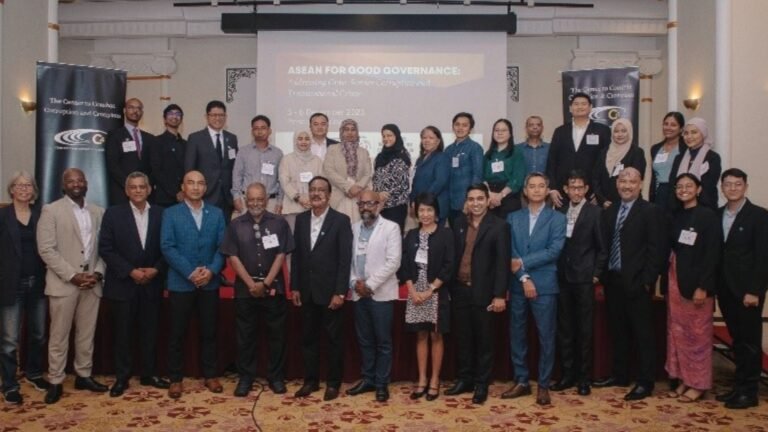Through an editorial, United Nations Secretary-General Antonio Guterres emphasized the importance of controlling nuclear weapons by exclaiming that the present global atomic landscape is a tinderbox that could be set alight with a single accident or miscalculation. The main hope to reverse the course, he maintained, is ensuring national participation in the Treaty on the Non-proliferation of Nuclear Weapons.
The long-awaited Non-proliferation Treaty Review Conference has been postponed once again until August 2022, after a new wave of COVID-19 took the world off-guard. The purpose of this article is not to comment on the importance of a non-proliferation treaty as such (which is, undoubtedly, of utmost importance); instead, the purpose is to understand the essence of American foreign policy that has turned into a global norm.
The United States Foreign Nuclear Policy: The Beginning
The “Manhattan Project” commenced in 1942 with the active collaboration of the British and Canadian scientific community, although the actual beginning can be traced back to 1938 when the potential for nuclear fission was discovered and Albert Einstein sent his letter to American President Franklin Roosevelt. Even before the world’s first atomic bomb was tested on 16. July 1945 at the “trinity site” in New Mexico, the preparation was underway for the post-war coordination for the use of atomic energy. A report issued by an interim committee in June 1945 provided valuable insight into the U.S. foreign policy posture concerning nuclear energy. Despite the interim committee’s recommendation to inform Russia, France and China about the recent atomic weapon progress, the United States preferred to keep this information and their knowledge of nuclear science a secret. This was evident because, even during the phase of nuclear monopoly, the U.S. tried to control nuclear information flow through the International Atomic Development Authority that would operate independently of the United Nations Security Council (at U.N. Atomic Energy Commission negotiations). This, perhaps, contributed further to the apparent distrust and later to the nuclear arms race. Another act that provided valuable insight into U.S. nuclear policy during this time period was the Atomic Energy Act of 1946 (also known as the McMohan Act). This legislations was passed by the American Congress to determine how the United States would control and manage nuclear technology. Section 5 (i.e. “Control of Materials”) of the act specifically denied any entity to use nuclear energy-related knowledge and technology except if on the commission itself. The United States concluded that America’s monopoly of nuclear weapons should be preserved by retaining national control of all nuclear weapons and denying the release of information on nuclear technology to all other nations, including Britain and Canada, which obviously created a rift between the United States and Britain and ultimately forced Britain to independently acquire a nuclear weapon.
Russia, enraged by the use of nuclear weapons without taking them into consideration, resolved to make its own atomic weapons domestically. Through active pursuance and following covert operations, Russia tested its first nuclear weapon in August 1949, ending the United States monopoly on nuclear weapons and thereby inducing the United States to amend its fundamental nuclear policy.
The Fundamental Shift in United States Nuclear Policy
Due to the threat of the Soviet Union’s potential nuclear fission and thermonuclear bomb capabilities, as declassified National Security Council Report, i.e. Nuclear Security Council 68, reveals, the United States of America adopted a more accommodative negotiating position vis-à-vis Soviet Union and other ‘free countries’ as early as 1950. The documents revealed that “if war breaks out in 1950 or in the next few years, the United States and its allies, apart from a powerful atomic blow, will be compelled to conduct delaying actions, while building up their strength for a general offensive.” Contrary to their anticipation that the Soviet Union would acquire nuclear capability only around 1964, the United States confronted a completely different set of circumstances that demanded a complete overhaul of their nuclear policy. A nuclear test by the United Kingdom further emboldened this outlook on revising and prioritizing nuclear policy in October 1952.
As a result of these unforeseen circumstances, the United States pursued a shift in nuclear policy, which was prophetically announced as a proposal in the famous ‘Atoms of Peace’ speech by the then President Dwight Eisenhower at the United Nations General Assembly in 1953. The proposal essentially involved the proliferation of nuclear energy for peaceful purposes and established the International Atomic Energy Agency as the storehouse of fissionable materials and to formally inspect any deviation of that policy to military use. The policy of providing nuclear technological knowledge to other countries had inherent danger, which was realized, but ultimately could not be addressed. Developing nuclear energy for peaceful purposes and military use is not mutually exclusive. Another reflection of this shift could also be seen in the 1958 amendment to the Atomic Energy Act of 1946. As a result, the United States was allowed to share nuclear information with its close allies and private companies to explore atomic energy for peaceful use.
Developing Foreign Policy Objectives into an International Norm
Discussion in previous sections informs how the United States shifted its nuclear policy in the wake of unforeseen contingencies. After the Soviet Union’s acquisition of nuclear capability, the United States’ foreign policy objective was pragmatically directed towards two key issues. First, the temptation among newly independent states for nuclear capability was to be contained. Through the ‘Atoms for Peace’ proposal, the United States suppressed that temptation and prevented international power dynamics from significant alteration (though with little deviation). Third-world countries enthusiastically accepted this bargain as it was formally solidified within the Treaty of Non-Proliferation of Nuclear Weapons. Despite looming security threats amidst the cold war, nuclear proliferation or use of it, as Nina Tannenwald puts it, had become ‘taboo.’ Second, a transatlantic interest was prioritized to promote a permanent arrangement aimed at containing Soviet Union expansion. This was addressed further through the establishment of the North Atlantic Treaty Organization (NATO) and its related security apparatus (which emphasized nuclear deterrence).
American foreign policy objectives have been fulfilled, institutionalized and globally accepted through a formal document called the Non-Proliferation Treaty (NPT). It is likely the most outstanding achievement of any country’s foreign policy, as this principle and related doctrine has evolved into global norms with obvious international legitimacy and outreach. As such, the relevance of the NPT cannot be understated.
Reference
António Guterres, “Nuclear weapons are not yesterday’s problem, they remain today’s growing threat”, 4 January 2022 https://www.un.org/sg/en/node/261359
Atomic Heritage Foundation, “Einstein-Szilard Letter” https://www.atomicheritage.org/key-documents/einstein-szilard-letter
Atomic Heritage Foundation, “Interim Committee Report” https://www.atomicheritage.org/key-documents/interim-committee-report-0
Atomic Archive, “Atomic Energy Act of 1946” https://www.atomicarchive.com/resources/documents/deterrence/atomic-energy-act.html
Klein, Julia (2021), “How a Jewish Spy entered the US Atomic Program- and Help Soviet Union Built the Bomb”, Forward, 19 July 2021 https://forward.com/culture/473053/how-a-jewish-spy-infiltrated-the-us-atomic-program-and-helped-the-soviet/
International Atomic Energy Agency, “Atoms for Peace Speech”, 8 December 1953 https://www.iaea.org/about/history/atoms-for-peace-speech
Tannenwald, Nina. “Stigmatizing the Bomb: Origins of the Nuclear Taboo.” Quarterly Journal: International Security, vol. 29. no. 4. (Spring 2005): 5-49
United Nations of Office of Disarmament Affairs, Treaty on the Non- Proliferation of Nuclear Weapons https://www.un.org/disarmament/wmd/nuclear/npt/text
Featured Picture Credit: Tim Wright/ICAN
About the Author: Abhishek Verma is a research associate with the IACS. He is currently a Ph.D. scholar at the School of International Studies, Jawaharlal Nehru University, New Delhi.








